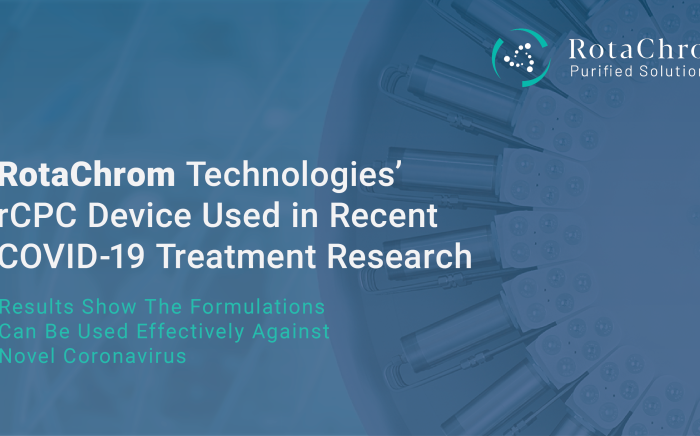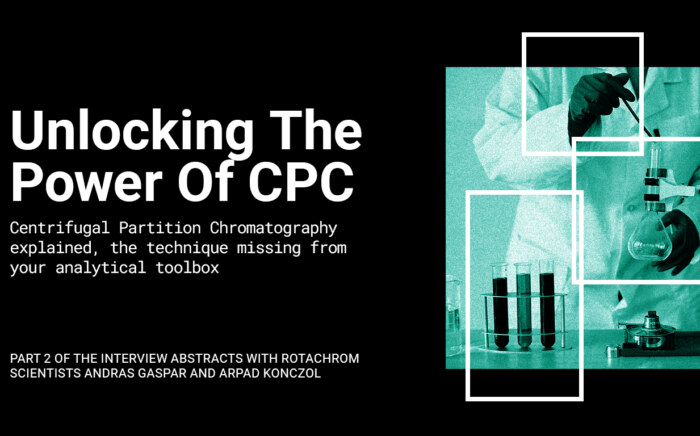Increasing separation efficiency by pH adjustment in Centrifugal Partition Chromatography
NewsCentrifugal Partition Chromatography Recap
Centrifugal Partition Chromatography (CPC) is a game-changer in the realm of chromatographic techniques, redefining the paradigm by discarding conventional columns and adopting interconnected cells. These cells, resembling columns, are linked in a series through ducts connected to a sizable rotor. The rotor is infused with the stationary liquid phase, which, under the influence of a robust centrifugal force, is held in place within the cells.
In CPC, the system comprises two phases: the stationary phase within the rotor and the mobile phase housing the sample to be purified. The mobile phase is pressurized and fed into the rotor, proceeding through the stationary phase in tiny droplets. This dynamic flow fosters efficient interplay between the sample and the stationary phase, resulting in effective separation and purification.
The adaptability of the CPC system is amplified by a valve that facilitates a change in flow direction. This attribute allows the CPC system to function in two primary modes: ascending and descending. In the ascending mode, the lighter phase serves as the mobile phase, whereas in the descending mode, the heavier phase takes on this role. This versatility empowers the optimization and customization of the purification process according to the specific attributes of the target compounds.
By embracing this novel liquid-liquid chromatographic approach, CPC offers distinct advantages over conventional methods. These include heightened separation efficiency, an increased loading capacity for samples, and diminished solvent consumption. Moreover, the capability to transition between ascending and descending modes broadens the spectrum of applications and enriches the versatility of the CPC system.
Modes of Centrifugal Partition Chromatography
Let’s explore the operational modes of a CPC device, using the technology by RotaChrom as an instructive example. In a RotaChrom CPC apparatus, the rotor and interconnected cells serve as the column, forming the basis for different operating methods. Specifically, the CPC device can be operated in two distinctive modes: ascending mode and descending mode.
The primary criterion for selecting the mode is the density of the mobile phase. This is crucial because the relative density of the liquid mobile phase compared to the immobilized stationary phase determines whether it is denser or less dense. In ascending mode, the mobile phase is the less dense of the two phases. Consequently, the flow direction opposes the centrifugal force. Conversely, in descending mode, the mobile phase becomes the denser phase. Typically, operating in descending mode often results in superior separation outcomes.
A RotaChrom CPC device can be operated in both modes, although the level of preparation required may vary depending on the specific device. For instance, in the case of rCPC, a single machine can be operated in either mode without the need for additional parts or preparations. However, with iCPC, the rotor needs to be switched based on the intended mode of operation. Specifically, a different rotor is employed for ascending mode compared to descending mode. Nevertheless, the iCPC device itself can remain unchanged, with only the rotor requiring modification.
This adaptability in operating modes empowers users to tailor the purification process according to their unique requirements and target compounds. Whether it’s ascending mode or descending mode, RotaChrom’s CPC technology provides effective and versatile separation capabilities, catering to a wide array of applications across diverse industries.



